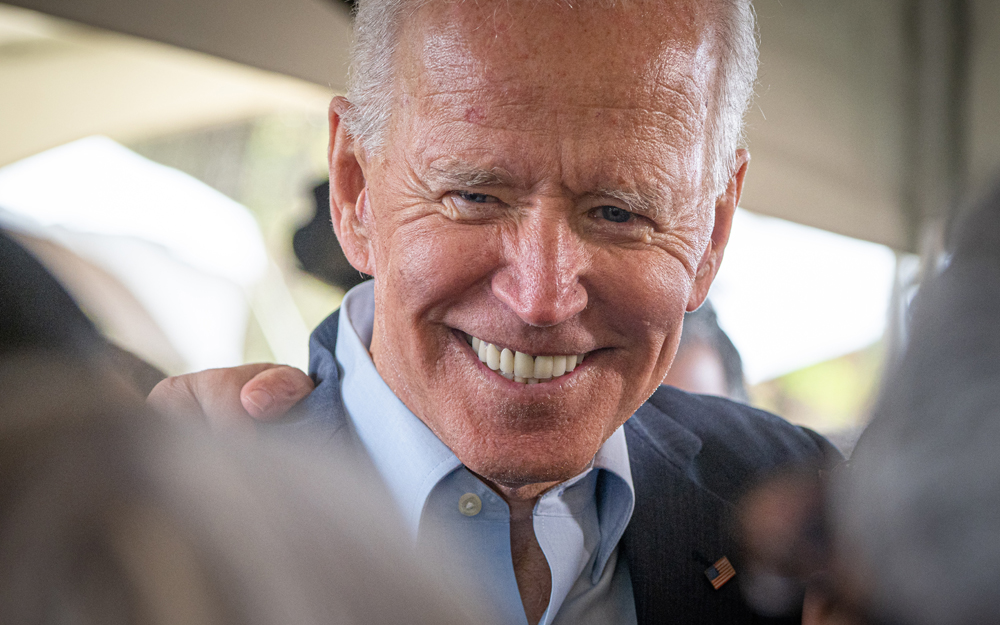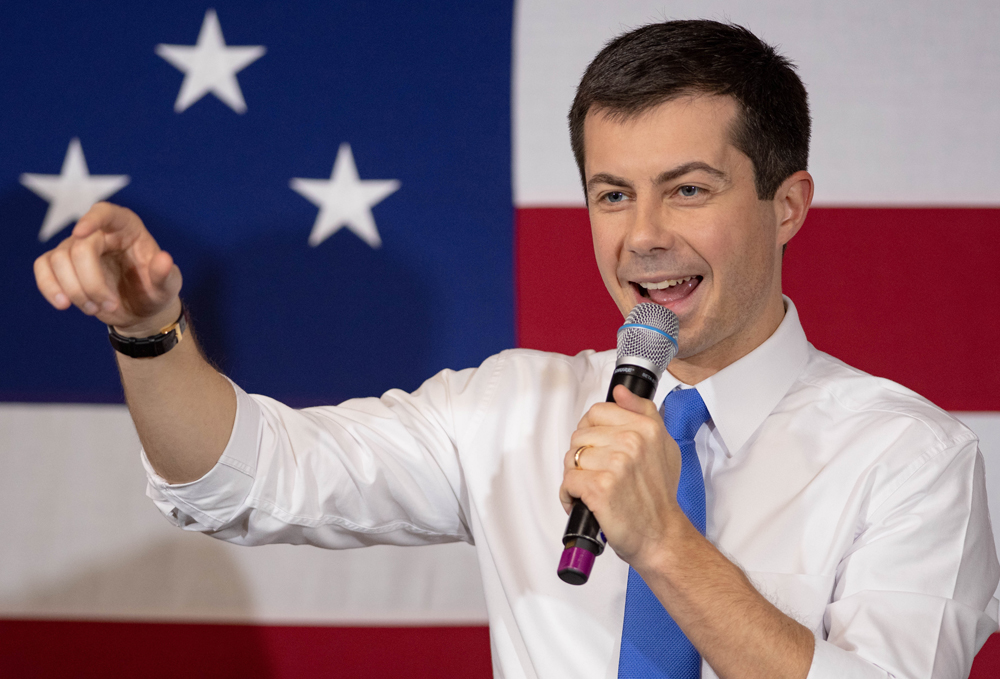
Everyone knew that rebuilding the US's transportation infrastructure was going to be a priority for an incoming president who gained fame decades ago for riding Amtrak to work every day when he was a senator. But very few people outside of President Joe Biden’s inner circle thought that it would be his administration’s top priority after recovering from the Covid-19 global pandemic and economic fallout.
But here we are: just a few months into the Biden era and the sausage making has begun. The president announced details about the first stage in an eight-year, $4 trillion plan to rebuild the country’s infrastructure across transportation, energy, education and healthcare.
In addition to creating jobs and spurring economic growth, the plan is the culmination of a bold strategy to use federal spending to overhaul the economy, remake American capitalism and address longstanding social and economic challenges such as climate change and racial equity.
“The American Jobs Plan will invest in America in a way we have not invested since we built the interstate highways and won the Space Race,” the administration wrote in a 25-page presser given out the same day as the president’s announcement.
How did we get here?
We first got a sense that the Biden administration was looking to go big on infrastructure during the confirmation hearings for the new secretary of transportation, Pete Buttigieg. The former mayor of South Bend, Indiana, said that his top priority would be to reduce the country’s transportation-related greenhouse gas emissions, curb the national roadway death toll that claimed more than 36,000 lives last year and increase mobility access for people with disabilities. He also grabbed headlines when he declared that US transportation policies are too ‘auto-centric’ while noting the importance of street design that enables biking and walking.
It was a powerful, purposeful statement intended to show that there was going to be a major shift in the country’s transportation strategy. It was clear we weren’t headed for a simple reauthorisation of the Fast Act—a biannual kick-the-can-down-the-road Congressional tradition since the Bush years—but rather a radical rethinking about the types of transportation projects that will get prioritisation and funding for the next four years.
The drumbeat continued through the president’s Build Back Better initiative and the latest $1.9 trillion Covid-19 relief bill that included billions of dollars in grants to state and local transportation agencies around the country hit hard by the pandemic. Then came a stunning announcement (31 March) of a $4 trillion plan to rebuild the country’s infrastructure across transportation, energy, education and healthcare. It was clear that all the messaging about infrastructure spending was more than political posturing - and despite the typical Washington gridlock, meaningful legislation that addresses the country’s $3.9 trillion infrastructure gap will be passed.
“It’s not a question of ‘if’,” Shailen Bhatt, CEO of ITS America, told ITS International via Zoom in late March. “It’s a question of ‘when’.”
Bhatt’s optimism has merit. After vaccine rollout, infrastructure is the top priority of the Biden administration. Everyone from vice president Kamala Harris, Buttigieg and even the president himself has been touring the country and the Sunday morning talk shows to showcase the administration’s infrastructure push.
“We believe that we have at this moment the best chance in any of our lifetimes to make a generational investment in infrastructure that will help us meet the country’s most pressing challenges today and create a stronger future for decades to come,” Buttigieg said during a press conference a week before the president’s infrastructure announcement in Pittsburg.
So, a bill is going to happen. But what does this mean for the ITS industry and how can departments of transportation and providers work with the new administration to build the transportation infrastructure for the 21st century?
$4 trillion price tag
It’s clear that the Biden administration is looking at infrastructure funding as a vehicle to solve the country’s three most pressing issues: recovery from the global pandemic, climate change and racial inequity. The hope is that the investment will spur development, create jobs and smooth the transition to a carbon-neutral society.
“Every dollar we spend rebuilding from a climate-driven disaster is a dollar we could have spent building a more competitive, modern and resilient transportation system that produces significantly lower emissions,” Buttigieg said at his press conference.
Mark Compton, president of the International Bridge, Tunnel and Turnpike Association (IBTTA) agrees. “The transportation sector is the largest producer of greenhouse gas emissions, [and] the need to address the ravaging effects of climate change is of critical importance as the world is threatened by severe weather events, wildfires, rising sea levels, and public health risks,” he said over email.
“The pending surface transportation reauthorisation can be a call to action to address emissions caused by fossil fuel vehicles and promote supportive infrastructure for new energy alternatives.”

The Biden administration’s plan includes $115 billion to rebuild roads and bridges, $85 billion for public transit, $80 billion for Amtrak and freight rail, $174 billion to encourage the use of electric cars and $42 billion for ports and airports.
Specifically, the money will go toward repairing the 10 most economically significant bridges in the country as well as 10,000 smaller bridges, electrifying 20% of the country’s school buses, building 500,000 electric vehicle charging stations and extending tax credits and other incentives for companies that make electric vehicle batteries domestically.
The estimated $4 trillion price tag will be completely funded over 15 years by an increase in income tax for individuals making more than $400,000 per year, an increase in the corporate tax rate to pre-Trump levels and the closing of tax loopholes multinational corporations use to reduce their tax hit on money they earn overseas.
A bill will eventually be passed by Democrats on a straight-party line vote—either by budget reconciliation, by changing filibuster rules or a combination of both.
Cutting-edge technologies
The transportation industry has taken notice of the probability of massive investment and is now working furiously behind the scenes to help craft the bills that will shape infrastructure spending for a generation.
The ITS industry should be able to get a substantial cut of the $35 billion earmarked for research and development programmes for cutting-edge technologies.
According to ITS America’s Bhatt, the industry has always grown out of research partnerships between government entities, research universities and private companies—and there’s reason to expect a big infusion of research dollars going to ITS America members.
But Bhatt is thinking beyond R&D by urging his members to reach out to people in the administration and in Congress and show them examples of how ITS innovation is already reshaping transportation in the US. He says the administration’s infrastructure plans present the industry with a real opportunity to push ITS deployments into the real world.
“Concepts like autonomous driving, connected vehicles, Big Data and real-time analytics are already working in the field to make transportation infrastructure smarter and more effective,” Bhatt said, while noting that the people making funding decisions need to see that these are more than just lab experiments.
Compton has been giving his members similar advice, mentioning that IBTTA is home to innovators who have an important track record of financing, building, operating and maintaining some of the most essential and well-travelled highways, bridges and tunnels in the US and across the globe.
“The IBTTA community is experienced at treating travellers as customers,” he said. “We understand the user-pays principle in transportation and the importance of a value proposition in our operations, services and practices. The know-how and capability of the IBTTA community is formidable and we stand ready to work hand in hand, together with Congress and the Biden administration, to address the many challenges before us.”
Allies at the top
Fortunately, the transportation industry has some allies at the top. In addition to transportation-friendly Biden and Buttigieg, assistant transportation secretary Polly Trottenberg knows her way around the industry, having worked in transportation for decades—both as a Congressional aide for top Democrats and with US Department of Transportation.
She served there during the Obama administration and then headed up the New York City Department of Transportation (NYCDoT) where she led Mayor Bill de Blasio’s Vision Zero initiative to reduce traffic fatalities. She oversaw the installation of thousands of speed cameras around the city and cut the city speed limit. NYCDoT also added new bike and bus lanes on her watch and banned cars in Central and Prospect Parks. Over the past year, Trottenberg expanded the Open Restaurants and Open Streets programmes during the pandemic—making it easier for pedestrians to socially distance.
Trottenberg also served on the ITS America Board of Directors. According to Bhatt, the future assistant secretary was a big booster of using technology to solve major transportation issues such as congestion, emissions and safety.
On the question of how to pay for the infrastructure investments, Compton wants a balanced plan made up of both funding and financing. He points out that IBTTA has always preferred that the federal government gives states greater flexibility to finance and fund major infrastructure with tolling and road pricing.
 ABOUT THE AUTHOR:
ABOUT THE AUTHOR:
Andrew Bardin Williams is a freelance journalist and US contributing editor for ITS International





